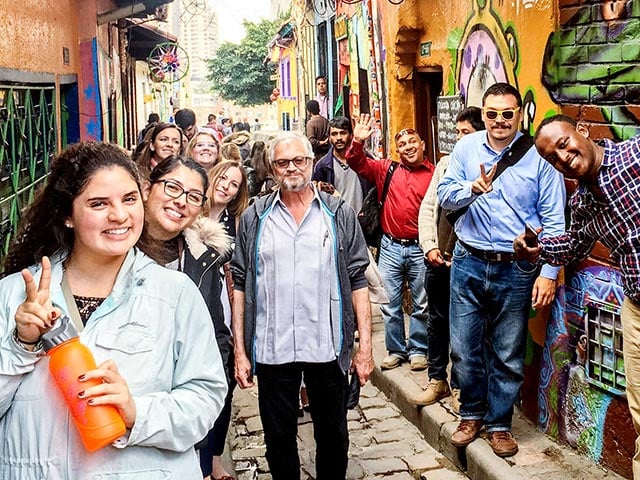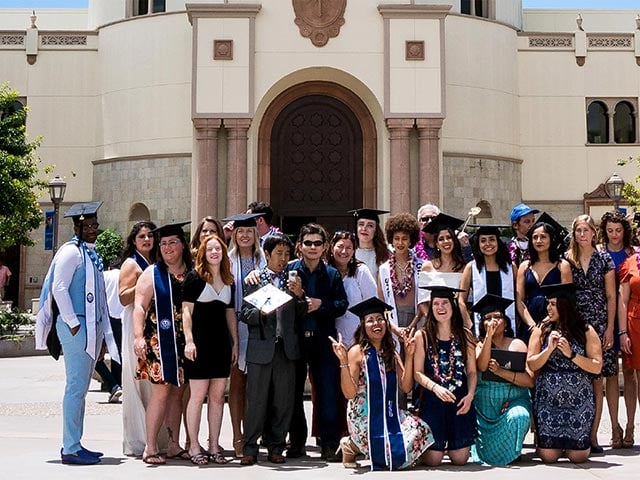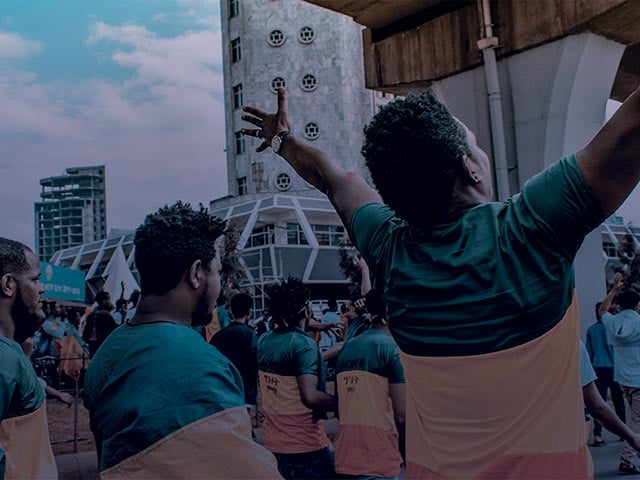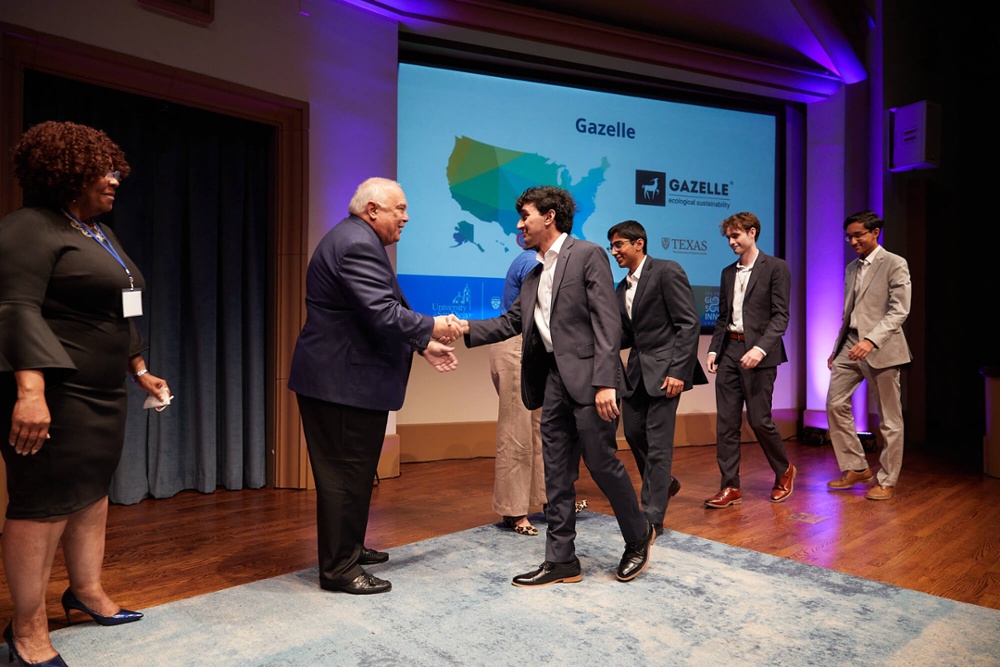The following blog post was written by Angela Leech, an Australian Fulbright Scholar and Delta Kappa Gamma World Fellowship Recipient who is completing a Master’s in Peace and Justice degree at the Joan B. Kroc School of Peace Studies at the University of San Diego.

Ange Leech. Interning Remotely from Coolgardie, Western Australia.
In Western Australia, in the small dusty town of Coolgardie, I am listening to a man share his experience of his recent return from prison to society after 32 years. He explains how he built hope in prison by teaching art to his fellow inmates and how artmaking builds bridges from incarceration to society.
This man’s name is Joseph Frye, and he is a new community justice scholar/learner in an Arts and Justice course where, this spring, I am also participating. This unconventional educational program was created by a socially-engaged artist and advocate for justice reform, Arizona State University Associate Professor Gregory Sale. This Art and Justice course is a continuation of Future IDs at Alcatraz, a large-scale collaborative art project led by Sale across California in prisons and communities impacted by high rates of incarceration. It invited justice system-impacted individuals to tell their own stories of trauma, transformation, and resilience through a visual arts language. This was achieved by participants creating ID-inspired artworks that depicted their chosen future path. I serve as a Future IDs project intern as part of my Master’s in Peace and Justice program at University of San Diego’s Kroc School.

Joesph Frye’s Future ID artwork, exhibited at Future IDs at Alcatraz 2019
Frye was one of hundreds of participants who created a Future ID while he was in Avenal State Prison in California’s central valley. He explains that the process gave him and many others the motivation and ability to visualize life beyond incarceration. As I listen to Frye, a realization hits me: This internship is exactly why three years earlier I applied for a Fulbright Scholarship to study in the United States. Since meeting Gregory Sale and learning about his art practice in 2016, it has been my goal to come to the U.S., collaborate, share skills and learn from U.S. creatives on how best to serve communities impacted by unjust prison systems.
Every week I Zoom into a virtual classroom, working in collaboration with six community justice scholars/learners from the Future IDs project, whose current work and expertise sits at the intersection of justice reform and art. Here we work alongside 15 undergraduate students, mentoring them and exploring together how to create art that serves social, cultural, public or political purposes.
Each of the co-teachers/justice scholars brings their own unique advocacy work to the group. Those who have been incarcerated shared how, since being released from prison, they have played a role in supporting their communities. Rather than hiding their conviction history, cohort member Kirn Kim states, “This should not be a factor of shame to hide, my past does not define who I am today.” Kim is now a leading educator on criminal justice issues.

Art and Justice. Future IDs portrait drawing exercise.
My colleagues who were some of the original Future IDs project collaborators and I have been invited into this space both as co-instructors and mutual learners by Gregory Sale. We are all part of a newly formed Future IDs Art and Justice Leadership Cohort. This group will continue to ask questions and push the boundaries of what can be achieved in justice reform through creativity, working across multiple institutions and platforms.
As a Future IDs intern and an Art and Justice Leadership Cohort member, my work involves developing lesson plans and learning tools, facilitating dialogue and artmaking activities. We break into small groups, critique each other's artwork and ideas, and together analyze the political and social potential of the work. One of the most exciting hands-on experiences was creating a hybrid analogue and digital artistic drawing technique, which I was able to lead and co-teach both in the Art and Justice course and as part of a workshop at the annual Anti-Recidivism Coalition retreat. The Los Angeles-based Anti-Recidivism Coalition is a support, education, and advocacy network for men and women with incarceration histories.

Demonstrating a hybrid analogue and digital artistic drawing technique.jpg
As a group, in the Art and Justice course, we learn different artistic methodologies referred to as socially engaged art, which focuses on community engagement, developing relationships, processing shared lessons and making mutual discoveries between the artists and the communities. To understand the foundation of this practice, Sale assigned Education for Socially Engaged Art: A Materials and Techniques Handbook by Pablo Helguera.
We also research a wide range of art projects and engage with guest artists, activists, and scholars from across the U.S. Jan Cohen Cruz, who until recently was the Director of Field Research for A Blade of Grass, spoke to us about her upcoming publication exploring the tensions of artists who work in collaboration with institutions in civic spaces, in the context of current social movements.

Where is Hasan Elahi. Art and Justice. 03.03.21
Mixed media artist Hasan Elahi taught us about his work that confronts overreaching government surveillance. Since being placed on the U.S. terrorist list in 2001, he has documented his every move, everything from flight travel to buying soap detergent, to photographing every urinal he uses, all backed up and linked to his bank transactions as a third party to prove he was really there. Humor aside, Elahi took these measures as an artistic and cultural strategy when he feared his life was in danger – the FBI began questioning his whereabouts on September 11 due to a presumptuous report from the owners of a storage unit he rented.
The artistic and social methods that Professor Sale engages to address justice reform have also been an inspiration in my own work in Australia. For the past 10 years, I have worked within the prison system, designing accessible educational programs for men and women from diverse cultural backgrounds. The unconventional style of socially engaged art practice I have learned about in the U.S. has helped me realize that art, community engagement and advocacy could be combined to have a deep impact in building relationships between adverse institutional constituencies. This type of art goes beyond the gallery and museums. It can soften institutional boundaries and bring together social groups with opposing ideas. By developing creative neutral spaces, dialogue can develop, generating new ways to work together and to take on challenging cultural problems.
Despite lockdowns, geographical challenges, digital fatigue, and being on the other side of the world, this internship and opportunity to be a cohort member fills me with inspiration and confidence that not only can we maintain human connection, but we can add value to each other's lives by creatively taking on societal challenges with flare, finding impactful and joyful ways to create positive change together.

About the Author
The Joan B. Kroc School of Peace Studies (Kroc School) at the University of San Diego is the global hub for peacebuilding and social innovation. Founded in 2007, the Kroc School equips the next generation of innovative changemakers to shape more peaceful and just societies. We offer master's degrees in peace and justice, social innovation, humanitarian action, conflict management and resolution, and a dual degree in peace and law — programs that have attracted diverse and dynamic students from more than 50 countries. In addition to our graduate programs, the Kroc School is home to the Kroc Institute for Peace and Justice (Kroc IPJ). Founded in 2001, the Institute supports positive change beyond the classroom. Through groundbreaking research, experiential learning, and forward-thinking programs, the Kroc School and Kroc IPJ are shaping a future in which peaceful co-existence is the new normal.





